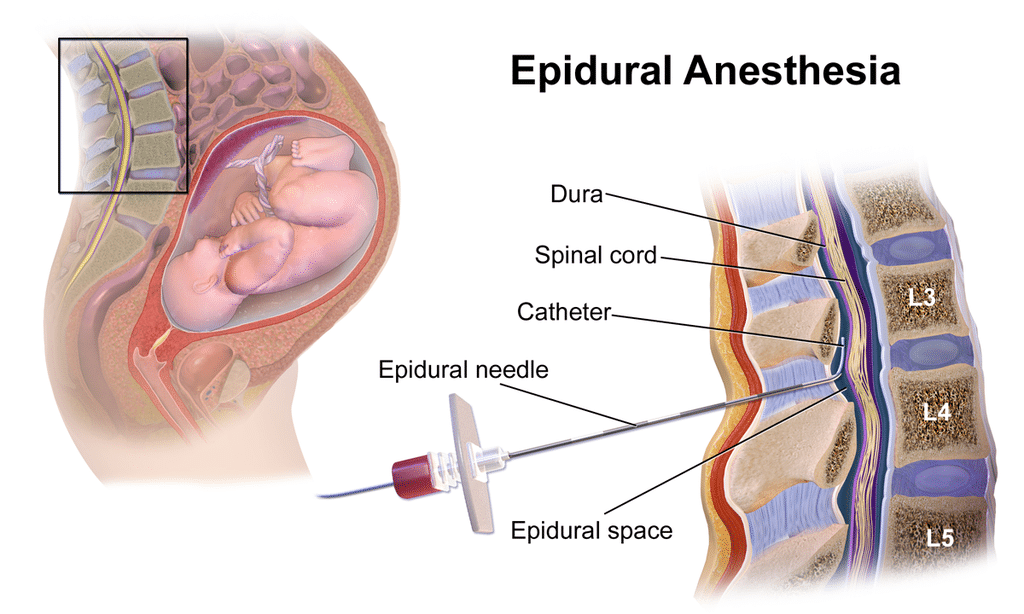The term ‘Epidural’ in the birth industry generally refers to Epidural administration of a local anesthesia in which an anesthetic drug is passed by way of a fine plastic tube into the space between the dura mater and the bony canal of the spine. This tube is passed in through a needle inserted between two of the lower bones of the spine. The method is popular for childbirth because it has no effect on the contractions of the womb (uterus) or on the respiratory center of the baby.
The epidural space is the space inside the bony spinal canal but just outside the dura mater. In contact with the inner surface of the dura is another membrane called the arachnoid mater (“arachnoid”). The cerebrospinal fluid that surrounds the spinal cord is contained by the arachnoid mater. In adults, the spinal cord terminates around the level of the disc between L1 and L2 (in neonates it extends to L3 but can reach as low as L4), below which lies a bundle of nerves known as the cauda equina. Hence, lumbar epidural injections carry a low risk of injuring the spinal cord.
Epidural administration. (2016, October 3). In Wikipedia, The Free Encyclopedia. Retrieved 02:48, October 3, 2016, from https://en.wikipedia.org/w/index.php?title=Epidural_administration&oldid=742333371

